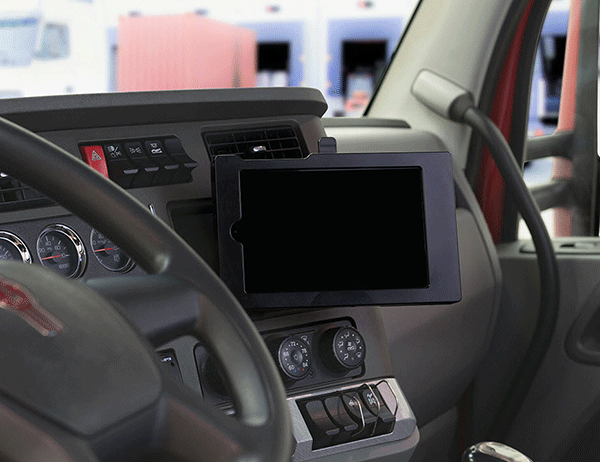
FAQ: Driver Logs, Hours of Service, DVIR
Paper logs were the standard back then – and are still in use sometimes today! But there are now far better ways to track hours. And we get many questions about how this works for drivers and motor carriers. The information here answers basic questions about driver logs, Hours of Service, and daily vehicle inspections.
Let’s have a look at modern methods of maintaining driver logs.
ELD: The Standard in Driver Logs
Over the last few years, the Federal Motor Carrier Safety Administration (FMCSA) has mandated a shift to Electronic Logging Devices (ELDs). This isn’t the first type of electronic logs. The ELD’s predecessor, the Automatic On-Board Recording Device (AOBRD), has been the standard since the late 1980s.
The FMCSA, though, issued a mandate requiring certain fleets to shift to the newer ELDs. The ELDs are designed to be more accurate. They require less input from the driver, which reduces the chance for errors. They work by syncing to the truck’s engine with GPS data. Truckers can sign off on the accuracy, giving them authority over the data.
Right now, ELDs come in a few different formats.
Until the mass adoption of mobile apps, dashboard-mounted tablets were the most-common form of ELD.
They’re usually wired directly into the vehicle, providing a steady supply of power. They also have the most-reliable signal reception.
Dash-mounted ELDs also have the advantage of tracking a vehicle rather than a person or mobile device. There’s no way a driver can forget about or lose their dash-mounted device. Another advantage is that some jurisdictions don’t allow commercial drivers to interact with a mobile device while driving. There are no such restrictions on dash-mounted logging devices.

As with almost all things, there’s also an app for that.
Some companies favor the Bring Your Own Device option. It’s inexpensive and it allows drivers to use their own mobile devices.
Using a mobile device opens opportunities for more modern functionality. It’s also possible to add more features over time. Apps allow you to have the DVIR device right in your hand. That’s a great way to save time.
Beyond ELD and on to Maintenance
With heavy-duty vehicles, maintenance is a must. Drivers and organizations demand a lot from these vehicles. They undergo significant wear and tear.
Staying on top of maintenance can have a measurable effect on safety. According the FMCSA, roadside inspections (which includes driver inspections) and traffic enforcement prevented more than 14,000 accidents and nearly 8,500 injuries in 2013 alone.
This is where a different type of driver logs comes in. Daily Vehicle Inspection Reports (DVIR) are a great way to track problems with vehicles. Like ELDs, these were once done on paper.
But mobile devices are changing everything about DVIRs.
With an app, drivers can snap photos of defects and immediately transmit them to fleet managers or maintenance teams. Mobile solutions also allow a forced workflow that ensures that drivers will do a thorough job of inspecting their vehicle. Some can even convert speech to text. They’re also customizable: Fleet managers can create inspection points based on vehicle class, type, or even individual drivers.
Take the Guesswork out of Compliance
Dash-mounted ELDs and mobile ELD/DVIR solutions can also take the guesswork out of regulatory compliance. If you’re considering any of these solutions, be sure to ask the provider whether they are guaranteed for the FMCSA or DOT compliance you need.
Get More From Driver Logs
Logs can be just one part of an over-arching approach to managing your organization’s vehicles. With other functionalities available through the system, you can also address accountability, efficiency, and safety.
You can turn the data from a fleet solution into practices that cut your fuel use, reduce wear and tear on vehicles, control your insurance prices, and much more.





